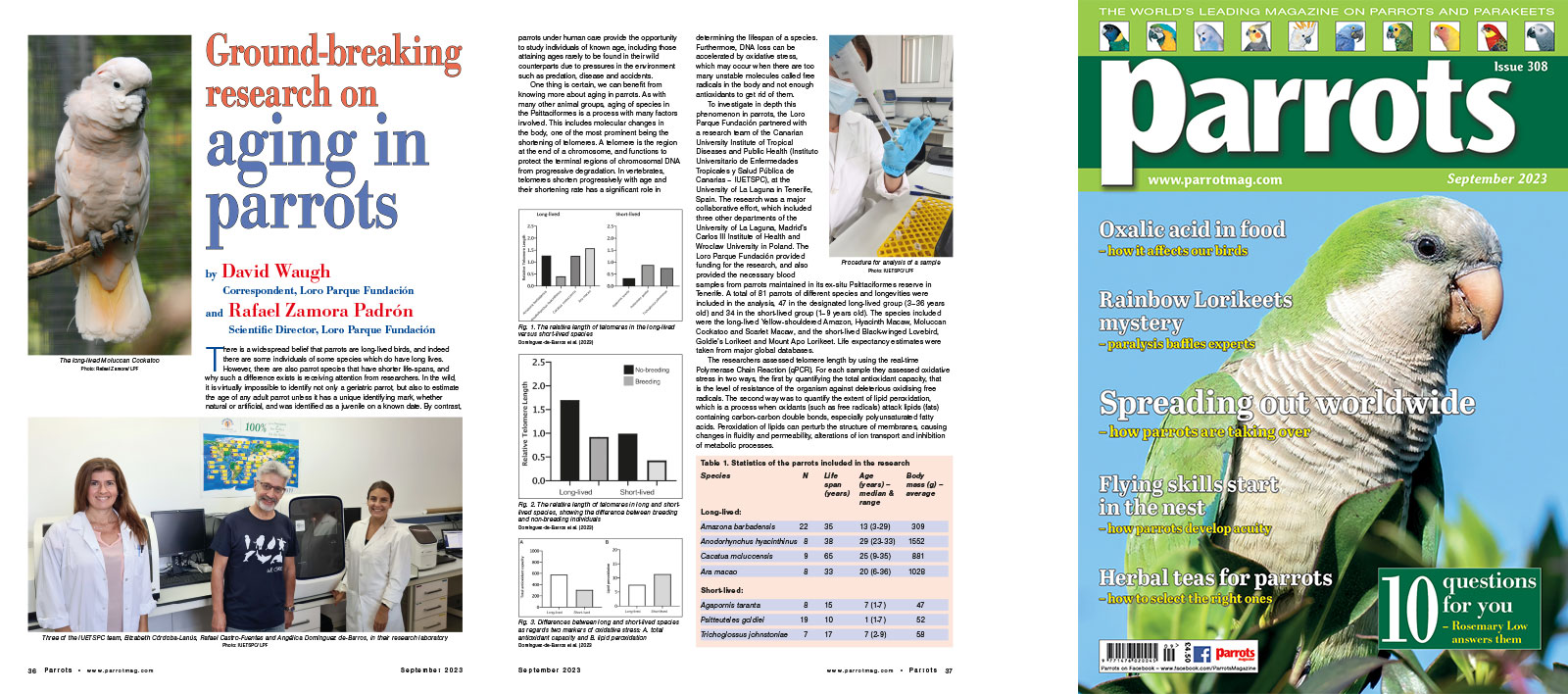
By David Waugh, Correspondent, Loro Parque Fundación, and Rafael Zamora Padrón, Scientific Director, Loro Parque Fundación
There is a widespread belief that parrots are long-lived birds, and indeed there are some individuals of some species which do have long lives. However, there are also parrot species that have shorter life-spans, and why such a difference exists is receiving attention from researchers. In the wild, it is virtually impossible to identify not only a geriatric parrot, but also to estimate the age of any adult parrot unless it has a unique identifying mark, whether natural or artificial, and was identified as a juvenile on a known date. By contrast, parrots under human care provide the opportunity to study individuals of known age, including those attaining ages rarely to be found in their wild counterparts due to pressures in the environment such as predation, disease and accidents.
One thing is certain, we can benefit from knowing more about aging in parrots. As with many other animal groups, aging of species in the Psittaciformes is a process with many factors involved. This includes molecular changes in the body, one of the most prominent being the shortening of telomeres. A telomere is the region at the end of a chromosome, and functions to protect the terminal regions of chromosomal DNA from progressive degradation. In vertebrates, telomeres shorten progressively with age and their shortening rate has a significant role in determining the lifespan of a species. Furthermore, DNA loss can be accelerated by oxidative stress, which may occur when there are too many unstable molecules called free radicals in the body and not enough antioxidants to get rid of them.
